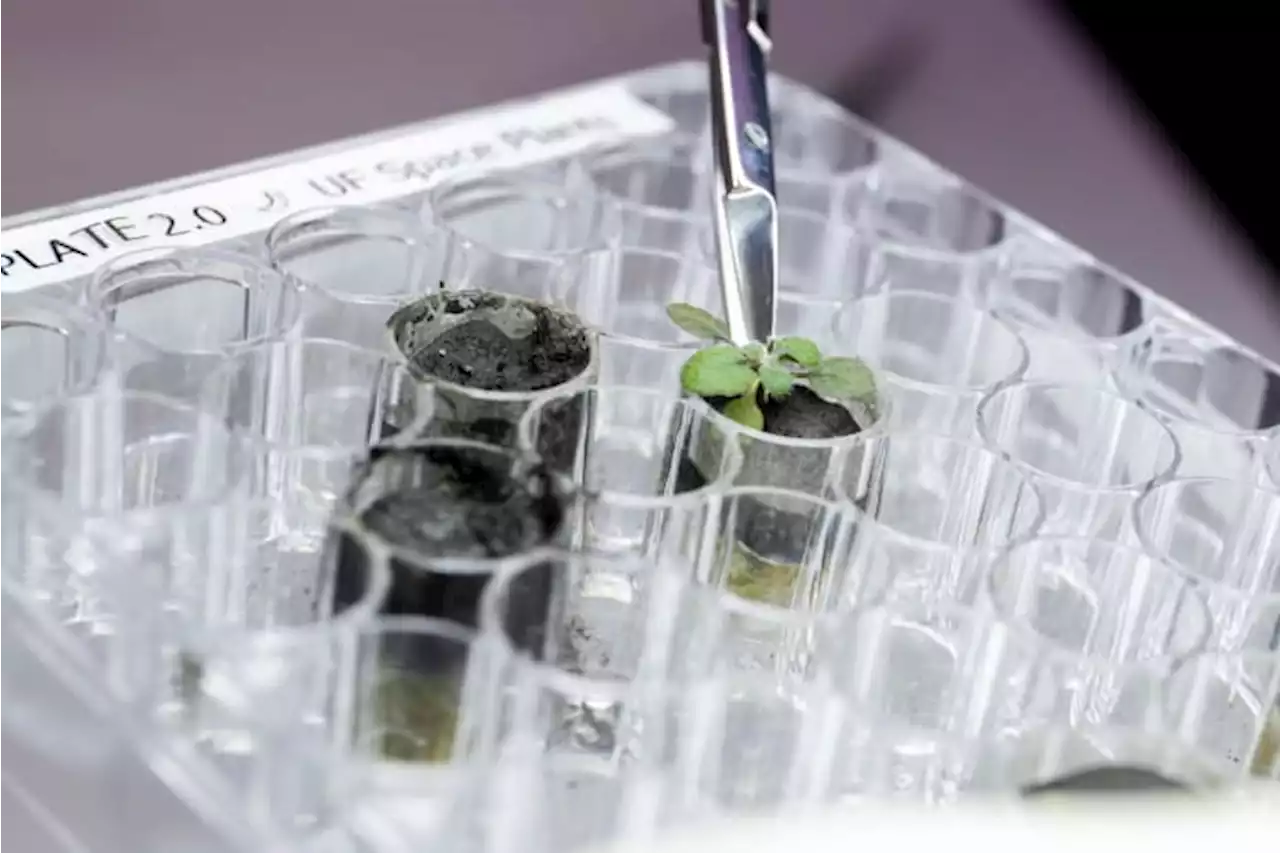Researchers had no idea if anything would sprout in the harsh moon dirt and wanted to see if it could be used to grow food by the next generation of lunar explorers. The results stunned them.
In this 2021 photo provided by the University of Florida, Institute of Food and Agricultural Sciences, a researcher harvests a thale cress plant growing in lunar soil, at a laboratory in Gainesville, Fla. For the first time, scientists have used lunar soil collected by long-ago moonwalkers to grow plants, with results promising enough that NASA and others already are envisioning hothouses on the moon for the next generation of lunar explorers.
The downside was that after the first week, the coarseness and other properties of the lunar soil stressed the small, flowering weeds so much that they grew more slowly than seedlings planted in fake moon dirt from Earth. Most of the moon plants ended up stunted.The longer the soil was exposed to punishing cosmic radiation and solar wind on the moon, the worse the plants seemed to do.
One solution might be to use younger geologic spots on the moon, like lava flows, for digging up planting soil. The environment also could be tweaked, altering the nutrient mixture or adjusting the artificial lighting,Only 842 pounds of moon rocks and soil were brought back by six Apollo crews. Some of the earliest moon dust was sprinkled on plants under quarantine with the Apollo astronauts in Houston after returning from the moon.
